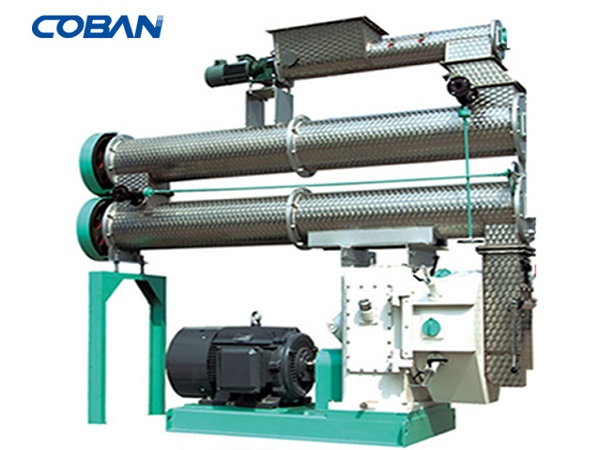Precise Control of Die Ring Hole Diameter: Customized Pellet Size
The diameter of the die ring holes, though seemingly a minor detail, is crucial in determining the size of the feed pellets. For cattle and sheep, we meticulously set the diameter range between 3 and 10 millimeters to create pellets that are easy to chew and absorb. This size range is determined not only by scientific feeding practices but also by a deep understanding of the growth habits of cattle and sheep, ensuring optimal feed utilization and healthy growth.
Artistry of Hole Area Distribution: The Art of Uniformity
The distribution of hole area is another major challenge in die ring design. It is akin to an artist’s brushstrokes that, while subtle, can invisibly craft a perfect picture. In cattle and sheep feed production, we strive for uniformity in pellet size, which requires careful layout of hole areas in the die ring to ensure each pellet undergoes the same extrusion and shaping conditions. This approach effectively controls size deviations in feed pellets, providing a more balanced nutrient intake for cattle and sheep.
Intelligent Choice of Hole Shape: Perfect Fusion of Shape and Function
The shape of the die ring holes is also a significant factor influencing the shape of the feed pellets. In the cattle and sheep feed industry, round holes are favored for producing regular, easily recognizable pellets. Building on this, we have innovatively introduced tapered round holes. This design cleverly utilizes fluid dynamics principles to reduce the risk of hole blockage, improving production continuity and stability. Additionally, the taper provides the pellets with some guidance, facilitating smoother flow in the digestive tract and enhancing digestion and absorption in cattle and sheep.


Scientific Balance of Hole Density: Harmony Between Yield and Energy Consumption
Hole density in the die ring represents a delicate balance between yield and energy consumption. A higher density can increase yield but also raises power consumption and die wear, affecting equipment longevity. Conversely, a lower density may limit yield and reduce production efficiency. Therefore, during the design process, we must consider the actual needs of cattle and sheep feed, equipment performance, and economic benefits to find the optimal hole density configuration. This balance ensures adequate yield while effectively controlling energy costs and optimizing resource allocation.
Rigorous Material Selection: Dual Assurance of Durability and Efficiency
The choice of die ring material directly affects its durability and production efficiency. In cattle and sheep feed production, we prefer high-hardness, wear-resistant alloy steel or stainless steel materials. These materials can withstand the immense pressure and friction generated during high-speed operation. They also resist the erosion from hard particles and corrosive substances in the feed. Thus, selecting appropriate die ring materials is key to ensuring long-term stable operation of the equipment and reducing maintenance costs.
Conclusion
In summary, the design of the die ring in cattle and Sheep feed pellet machine is a complex process. It integrates science, art, and practicality. It requires precise and rational decisions on hole diameter, area distribution, shape, density, and material selection. Through scientific and reasonable investment and use management, sheep feed pellet machine will bring more efficient, environmentally friendly and sustainable development momentum to the breeding industry, helping the breeding industry to reach new heights.












